Among the majestic giants that roamed North America during the Late Jurassic period, Camarasaurus stands out as one of the most commonly discovered and well-studied sauropod dinosaurs. With its distinctive arched skull and modest size (compared to other sauropods), this herbivorous behemoth left a significant fossil record throughout the western United States. Appearing approximately 155-145 million years ago, Camarasaurus has provided paleontologists with crucial insights into sauropod anatomy, behavior, and ecology. This article explores the fascinating world of Camarasaurus, from its initial discovery to our current understanding of how these magnificent creatures lived and thrived across ancient North America.
The Discovery and Naming of Camarasaurus
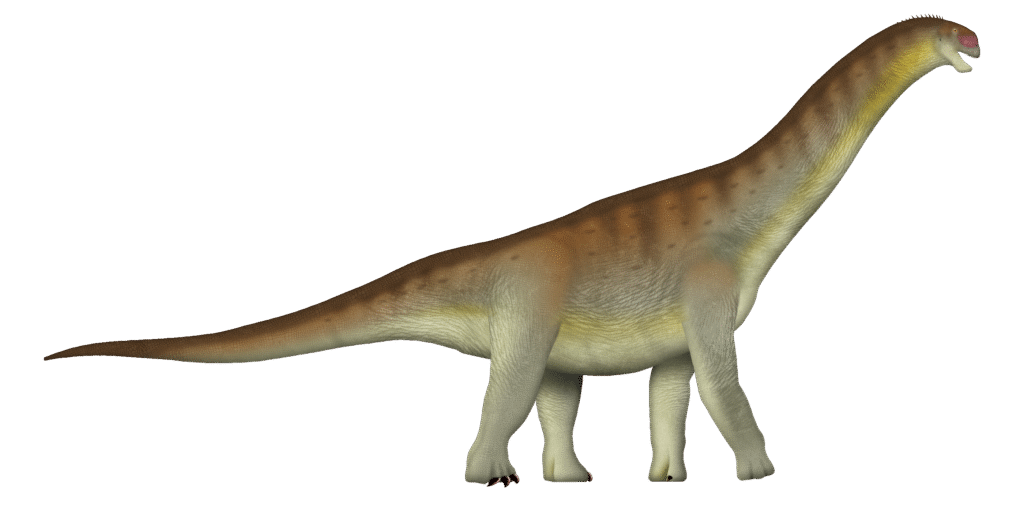
Camarasaurus was first discovered in 1877 during the infamous “Bone Wars” period of American paleontology. The genus was named and described by paleontologist Edward Drinker Cope, who derived the name from the Greek words “kamara” (meaning “chamber” or “vault”) and “sauros” (meaning “lizard”). This name referred to the distinctive hollow chambers in the dinosaur’s vertebrae, a feature that caught Cope’s attention during his examination of the specimens. The first fossils were unearthed in Colorado, but subsequent discoveries would reveal that Camarasaurus was widespread throughout the Morrison Formation, a geological unit spanning several western states, including Wyoming, Utah, Colorado, New Mexico, and Oklahoma. These initial findings sparked scientific interest that continues to this day, with Camarasaurus remaining one of the most completely known sauropods due to the abundance of specimens representing various growth stages.
Physical Characteristics and Size
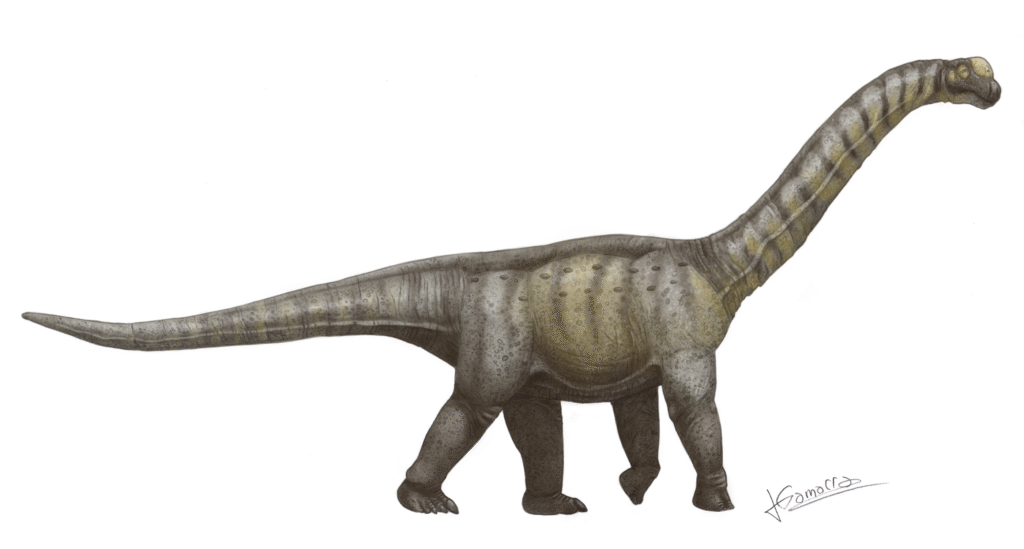
Camarasaurus was a medium-sized sauropod, reaching lengths of 15-23 meters (50-75 feet) and weights estimated between 15-25 tons, depending on the species. Its body displayed the classic sauropod form—a small head perched atop a very long neck, a barrel-shaped body, and a lengthy tail that helped balance its massive frame. Unlike some of its relatives, Camarasaurus had a relatively short, blunt snout with a distinctive arched profile when viewed from the side. The nostrils were positioned high on the skull, near the eyes, rather than at the end of the snout. Its teeth were spatulate (spoon-shaped) and remarkably robust compared to other sauropods, suggesting specialization for particular feeding strategies. The vertebrae were less complex than those of diplodocids or brachiosaurids, featuring large openings (pleurocoels) that reduced weight while maintaining structural integrity—an elegant evolutionary solution to the biomechanical challenges of gigantism.
Species Diversity Within the Genus
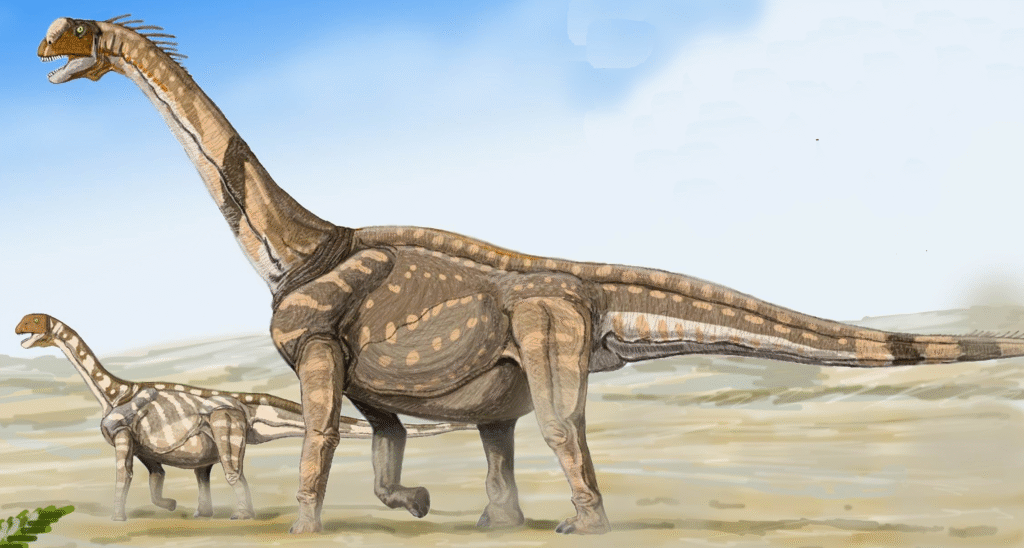
Paleontologists currently recognize four valid species within the Camarasaurus genus, each with distinctive characteristics and temporal ranges. Camarasaurus supremus, the type species, was the largest member of the genus and is known from the upper Morrison Formation. Camarasaurus grandis, slightly smaller but more common in the fossil record, has provided some of the most complete skeletons. Camarasaurus lentus represents a smaller form, with specimens that have yielded crucial growth-stage information. The rarest species, Camarasaurus lewisi, is known from a single specimen discovered in the Brushy Basin Member of the Morrison Formation. These species variations demonstrate evolutionary adaptation across both time and geography, with subtle differences in vertebral structure, limb proportions, and cranial features distinguishing each form. The diversity within the genus offers valuable insights into the evolutionary pressures and speciation processes affecting large dinosaurs during the Late Jurassic.
The Morrison Formation: Camarasaurus’s Prehistoric Home
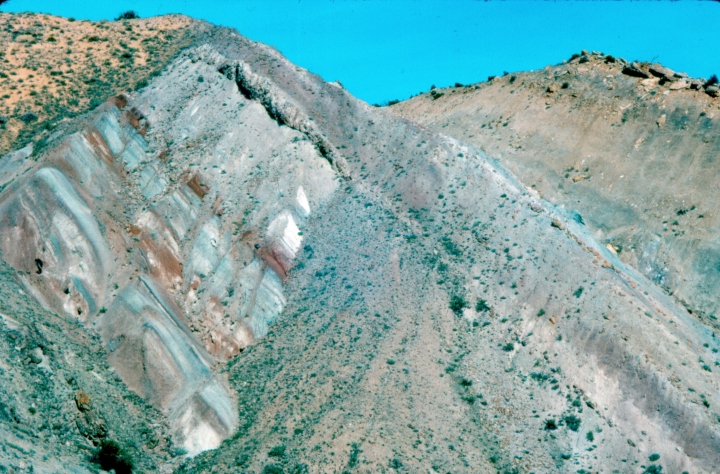
The Morrison Formation represents one of the most productive and important dinosaur-bearing geological units in North America. During the Late Jurassic period, when Camarasaurus thrived, this region consisted of vast floodplains and seasonal river systems rather than the arid landscapes seen today. The environment fluctuated between wet and dry seasons, creating a mosaic of habitats including gallery forests along waterways, open woodlands, and savanna-like plains. This diverse ecosystem supported an impressive array of dinosaurs alongside Camarasaurus, including the massive Apatosaurus, the plated Stegosaurus, and the predatory Allosaurus. Plant life was dominated by conifers, ginkgoes, cycads, and ferns, providing abundant food for herbivorous dinosaurs. The prevalence of Camarasaurus remains throughout different levels of the Morrison Formation suggests this dinosaur was adaptable to environmental changes, maintaining a successful presence across both time and geographic space in this dynamic prehistoric landscape.
Feeding Habits and Dietary Adaptations

Camarasaurus possessed several anatomical features that provide strong clues about its feeding ecology. Its robust, spoon-shaped teeth were ideal for processing tougher plant materials than those consumed by more dentally toothed sauropods like diplodocids. Wear patterns on fossilized Camarasaurus teeth suggest they used their dentition to crop vegetation and perform limited processing before swallowing. Unlike some sauropods that likely engaged in ground-level browsing, Camarasaurus’s neck posture and skull anatomy indicate it was primarily a mid-level browser, feeding on vegetation between 3 and 10 meters above the ground. This feeding strategy would have minimized competition with other herbivorous dinosaurs that specialized in different vertical feeding zones. Studies of Camarasaurus jaw mechanics indicate it had a relatively powerful bite for a sauropod, further supporting the hypothesis that it consumed somewhat tougher plant materials than its contemporaries. Paleobotanical studies of the Morrison Formation suggest its diet likely included conifers, cycads, and possibly horsetails and ferns accessible at its preferred browsing height.
Growth and Development
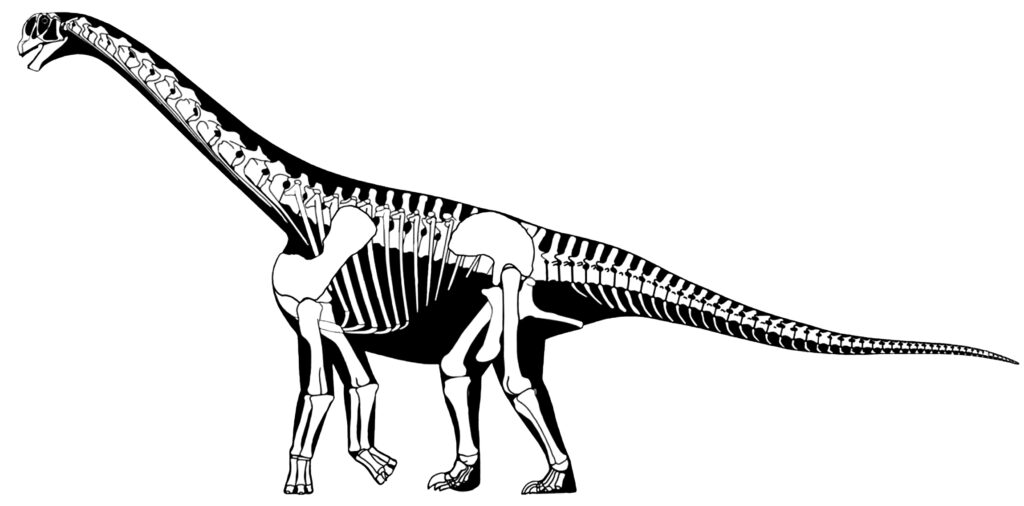
The discovery of Camarasaurus specimens representing different growth stages has provided paleontologists with an unprecedented opportunity to study sauropod development. By analyzing bone histology (the microscopic structure of bone tissue), researchers have determined that Camarasaurus experienced rapid growth during its early years, similar to modern elephants but at an accelerated rate. A juvenile Camarasaurus might have grown from a hatchling weighing a few kilograms to a multi-ton adolescent in just a decade. The bones show distinctive growth rings, analogous to tree rings, that indicate seasonal variations in growth rate throughout the dinosaur’s life. Studies suggest that sexual maturity was reached before the animal attained its full adult size, perhaps at around 70-80% of maximum growth. Complete skeletal fusion, indicating the cessation of growth, appears to have occurred in specimens estimated to be 20-30 years old, suggesting these dinosaurs had relatively long lifespans for Mesozoic animals. This growth pattern—rapid early development followed by a more extended period of slower growth—represents an evolutionary compromise between the advantages of large body size and the biological constraints on growth rates.
Locomotion and Biomechanics
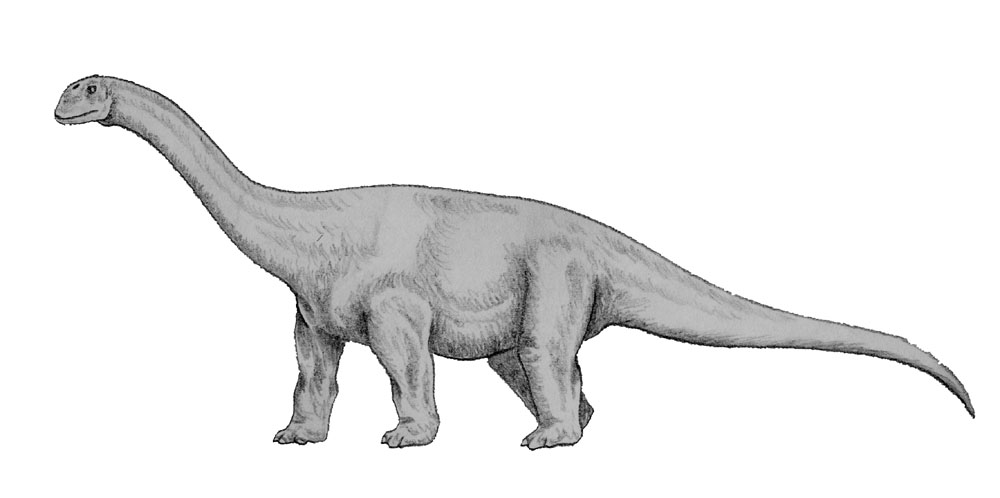
The locomotor capabilities of Camarasaurus have been the subject of extensive biomechanical research. Analysis of its skeletal structure reveals a more robust build than contemporaries like Diplodocus, with thicker limb bones suggesting a different locomotor strategy. Camarasaurus had relatively straight limbs positioned directly beneath its body, creating a columnar stance similar to that of modern elephants. This arrangement efficiently distributed its massive weight and enabled surprisingly efficient locomotion despite its size. Trackway evidence from the Morrison Formation indicates that sauropods like Camarasaurus typically moved at walking speeds of 3-8 kilometers per hour, though they may have been capable of brief faster movements when necessary. The tail, though shorter than in some other sauropods, served as a counterbalance to the neck and helped stabilize the animal during movement. Computer modeling of Camarasaurus biomechanics suggests that its center of mass was positioned slightly forward of the hip socket, creating a naturally stable stance that required minimal muscular effort to maintain. This efficient biomechanical design was crucial for an animal that needed to support its enormous weight while moving through varied terrain in search of sufficient quantities of food.
Social Behavior and Herd Dynamics
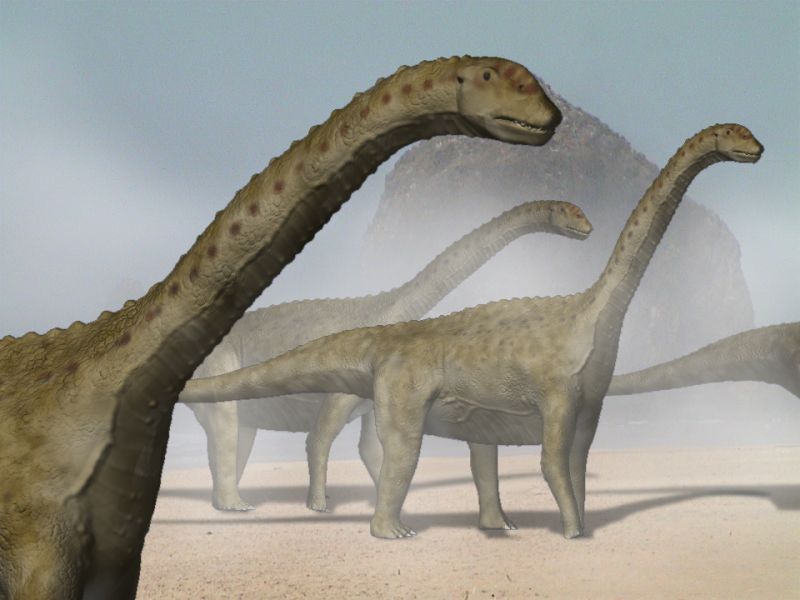
Evidence from multiple bone beds containing Camarasaurus remains suggests these dinosaurs likely exhibited some degree of social behavior. Sites where multiple individuals were preserved together, particularly in the same orientation, provide tantalizing hints of herd structure. Age distribution analysis of these assemblages indicates mixed-age groupings, suggesting family units or herds that included both juveniles and adults. This social organization would have provided several evolutionary advantages, including protection from predators like Allosaurus and enhanced foraging efficiency. Younger animals may have benefited from the experience of older individuals in locating food and water sources across the seasonal landscape of the Morrison Formation. Some paleontologists have suggested that Camarasaurus might have engaged in migratory behavior, moving seasonally to follow food availability patterns across the extensive floodplains. The presence of multiple Camarasaurus species occupying slightly different ecological niches within the same broader environment further suggests complex social and ecological interactions among these impressive herbivores, potentially including resource partitioning to minimize direct competition.
Pathologies and Evidence of Ancient Injuries

Careful examination of Camarasaurus fossils has revealed numerous examples of pathologies—evidence of injuries, infections, and other medical conditions that affected these animals during life. These pathological specimens provide fascinating glimpses into the challenges faced by individual dinosaurs. Several Camarasaurus vertebrae show signs of healing after fractures, suggesting these animals could survive significant trauma and recover over time. Arthritic conditions have been identified in some specimens, particularly in foot and ankle bones, indicating the tremendous stresses placed on the skeleton by the animal’s massive weight. Evidence of infections, visible as abnormal bone growth or erosion patterns, demonstrates that these dinosaurs were susceptible to various diseases. Perhaps most dramatically, some Camarasaurus specimens bear tooth marks that match the dentition of predators like Allosaurus, providing direct evidence of predator-prey interactions. The fact that some of these wounds show signs of healing confirms that at least occasionally, Camarasaurus individuals managed to escape predatory attacks and survive. These paleopathological studies add a compelling dimension to our understanding of Camarasaurus, transforming fossil remains into evidence of lived experiences from the distant past.
Reproduction and Life History
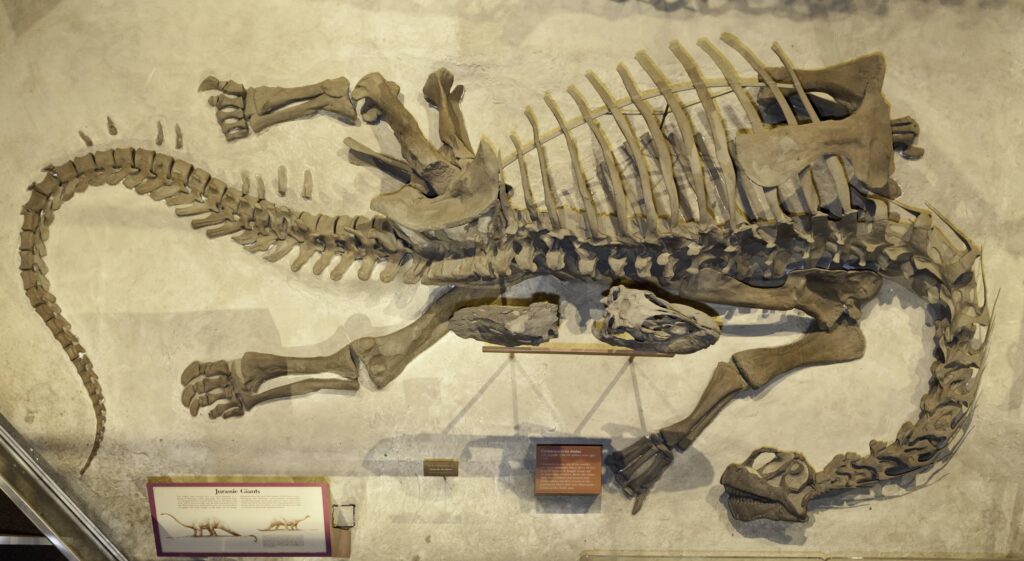
The reproductive biology of Camarasaurus, like that of many dinosaurs, remains somewhat speculative due to the limitations of the fossil record. However, comparisons with other sauropods and careful analysis of existing evidence have allowed paleontologists to reconstruct likely patterns. Camarasaurus probably laid eggs in communal nesting grounds, depositing clutches of 20-30 eggs in shallow depressions scraped into the ground. The eggs themselves would have been relatively small for such a large animal, typically 20-25 centimeters in diameter with a hard, mineralized shell. Unlike many modern reptiles, sauropods likely provided little or no parental care after egg-laying, relying instead on the sheer number of eggs to ensure some offspring survived to adulthood. Growth ring analysis of juvenile specimens suggests hatchlings grew rapidly, potentially reaching several tons within just a few years. This accelerated growth would have been advantageous in an environment where young dinosaurs faced threats from various predators. The transition from vulnerable juvenile to relatively predator-resistant subadult represents a critical survival threshold in the Camarasaurus life cycle, with mortality rates likely dropping significantly once individuals reach approximately 3-5 tons in weight.
Scientific Significance of Camarasaurus Discoveries

Camarasaurus holds a special place in paleontological research due to the exceptional completeness and abundance of its fossil remains. While many dinosaur species are known from fragmentary material, numerous near-complete Camarasaurus skeletons have been discovered, providing scientists with unprecedented opportunities for comprehensive study. These specimens have served as reference points for understanding sauropod anatomy, with Camarasaurus often being the first comparison made when new sauropod material is discovered. The genus has featured prominently in studies of dinosaur growth and development, with specimens representing multiple ontogenetic stages allowing researchers to track changes throughout the life cycle. Camarasaurus has also contributed significantly to our understanding of sauropod biomechanics, respiratory systems, and feeding mechanisms. The discovery of specimens with preserved soft tissue impressions, though rare, has provided glimpses of external anatomy rarely preserved in the fossil record. Additionally, Camarasaurus has played a crucial role in biostratigraphic studies of the Morrison Formation, helping paleontologists determine the relative ages of different fossil-bearing layers and reconstruct the changing fauna over time.
Extinction and Legacy

Camarasaurus disappeared from the fossil record by the end of the Jurassic period, approximately 145 million years ago, as part of broader faunal changes occurring in North America. Unlike the more famous end-Cretaceous mass extinction that claimed the remaining dinosaurs 66 million years ago, the disappearance of Camarasaurus appears to have been part of a more gradual turnover. While the exact causes remain debated, environmental changes associated with shifting continental positions and altered climate patterns likely played significant roles. Although Camarasaurus itself became extinct, the broader sauropod lineage continued to thrive and diversify throughout the Cretaceous period, particularly in the southern continents. The ecological niche occupied by Camarasaurus in North America was later filled by different sauropod groups with their specializations. The legacy of Camarasaurus extends into modern times through its contribution to our scientific understanding of dinosaur biology and its prominent place in museum displays worldwide. As one of the most completely known sauropods, Camarasaurus continues to serve as an ambassador from the distant past, helping scientists and the public alike envision the remarkable world of the Late Jurassic.
Cultural Impact and Public Engagement
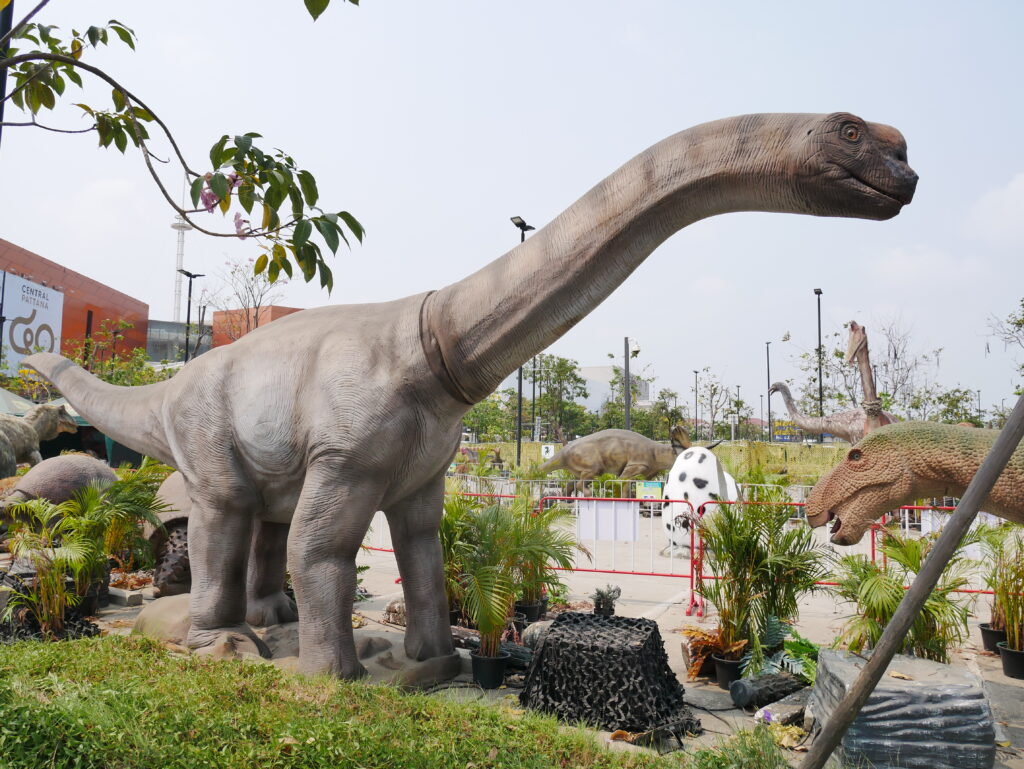
While perhaps less famous than dinosaurs like Tyrannosaurus or Triceratops, Camarasaurus has nonetheless made significant contributions to public understanding of prehistoric life. Its complete skeletons form centerpiece displays in many major natural history museums, including the Smithsonian’s National Museum of Natural History, the American Museum of Natural History, and the Carnegie Museum of Natural History. These impressive mounts, often positioned in lifelike poses, provide visitors with a tangible connection to the Jurassic period and demonstrate the awe-inspiring scale of sauropod dinosaurs. Camarasaurus has featured in numerous documentaries about prehistoric life, helping to illustrate the diversity of sauropod dinosaurs beyond the more commonly depicted Brachiosaurus or Diplodocus. Educational programs frequently use Camarasaurus as an example when discussing dinosaur adaptations, feeding strategies, and the concept of gigantism in prehistoric animals. The extensive fossil record of this dinosaur has also made it valuable for public engagement in paleontology, with some specimens being prepared in “fossil labs” visible to museum visitors, allowing people to witness the process of extracting dinosaur remains from surrounding rock matrix and transforming them into scientifically valuable specimens.
Conclusion: Camarasaurus’s Place in Dinosaur Evolution
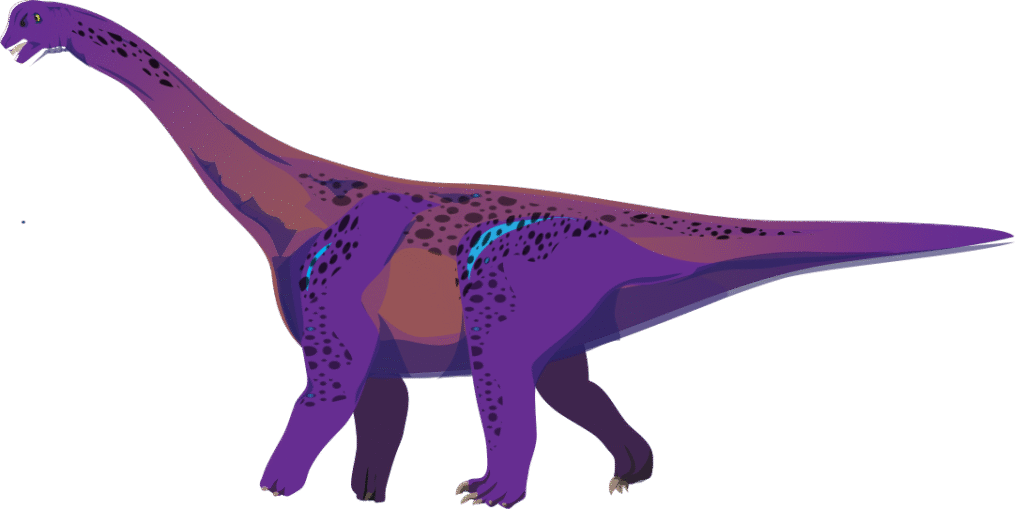
Camarasaurus represents a critical piece in the puzzle of sauropod evolution and diversification during the Jurassic period. As a member of the family Camarasauridae, it occupied an evolutionary position between the more basal sauropods and the highly specialized forms that would later dominate different continents. Its abundance in the fossil record provides an unparalleled window into the biology of these magnificent animals, offering insights that more fragmentary species cannot provide. The success of Camarasaurus across the Western United States demonstrates the effectiveness of its particular adaptations—robust teeth, moderate size compared to other sauropods, and efficient locomotion—in exploiting the resources of the Morrison ecosystem. While other sauropod lineages would produce larger or more specialized forms, Camarasaurus exemplifies the “generalist” approach that proved remarkably successful for millions of years. As paleontological techniques continue to advance, from microscopic bone analysis to sophisticated computer modeling, this well-represented dinosaur will undoubtedly continue to yield new insights into the biology and ecology of Earth’s most massive land animals, cementing its importance in our understanding of life’s evolutionary history.



